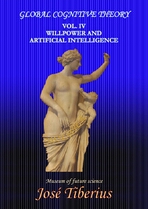2.b) Reasoning and thoughts
A second stage of the decision-making models, or a generation of will, is the evaluation of a goal requiring a decision using reasoning and thoughts. There will be a combination of logical processes and memory.
As commented on in previous sections, the information verification method is one of the methods used in decision-making processes; the functionality of the neuronal networks allows for considerable flexibility in the application of the different variants of this method.
Usually, billions of neurons are involved in carrying out the decision-making process.
Although the analysis of the procedure has two steps for expository reasons, nothing prevents the two steps from being simultaneous in some instances. Neuroscience postulates the cognitive and other mixed processes, such as emotions, are very flexible and variable in their structure and specific development.
Furthermore, the cognitive processes and emotions affect each other; the context can influence the situation decisively. Consequently, some contextual elements, such as alcohol or other drugs, are vices of will.
Emotions or even in independent contexts can also act as vices of will.
It is possible that our brain never ceases, at least while we are conscious. It seems to have a line of pending reasoning and thoughts so that, when one ends, immediately another one appears according to its urgency or any other criteria.
Other sections commented on the work the human brain performs, and its relevance while sleeping.
2.c) Development of political systems of decision-making
It seems the human brain is not an exclusive decision-making center. There are acts, called reflexes, carried out by our entire body. In addition, modern biology teaches us how the body's different organs and cells emit signals and communicate between one another.
(Public domain image)

If there were a decision-making center, the rest would be nothing more than somewhat a complex machine. Of course, we would have to ask how many cells are in this center and which of them have the power of decision. More so, what part of this hypothetical cell would be the part that makes the final decision?
An interesting characteristic of the choices we make is their degree of confidence or stability.
Sometimes we are convinced, other times, we are not entirely sure and other times we feel very insecure.
We can observe this effect in repetitive decision-making processes. It seems reasonable that decisions made with total security persist over time; however, this is not always the case. Sometimes people change their mind, even in the short-term, despite their initial confidence in the stability of choice adopted.
Our will can change even though the information and logic are the same; it refers to the slightly schizophrenic side in all of us.
A model of the decision-making processes (that can explain and integrate the possibilities stated in the previous paragraphs) should count on expert and control systems. That is, it may be like the development of dynamic systems like a country's political system.
In typical situations, we can find decision-making processes such as:
Automatic decisions
A multitude of small decisions is unconscious due to the development of systems of information, which identify necessary and enough parameters.
In our example, these would be all those decisions that do not follow parliamentary procedures because they are not so significant, or they are part of previous conclusions.
Reflexive and semi-reflexive acts
We decide emergencies immediately; we have them evaluated afterward, and if needed, we adjust the guidelines for future behavior with the development of dynamic systems.
It is easy to observe the parallelism with the working of a modern state, although the danger or urgency would be fictitious at times.
Overall immediate consultation
It would be as if all our cells voted on a subject. It seems one of the best systems and supposes a direct democracy without any filter.
It would be the equivalent of a referendum. A significant power of information transmission is required, especially if we are speaking about billions of cells, and it occurs often. The dynamics of intricate systems will undeniably limit its use more than necessary.
Representation
Simple majority
Reinforced majority
Nature tries to resolve the problem of respecting minorities in the theory of decision.
Organic - territorial - functional
Additional problems still within typical situations can use these types of representation. They not only deal with the minorities but also recognizing their special relevance in particular areas.
-
Other channels that take in specific situations
The equivalent in a political system could be lobby groups.
However, some behaviors do not seem to follow the indicated guidelines of the theory of decision; then, the model needs to integrate more elements to explain some choices showing significant alterations of a person's character.
We are referring to vices of will that alter the system of dynamic equilibrium of the will, like:
Sicknesses
Drugs
Other internal chemical processes
Unfortunately, although it cannot be in any other way, this example also materializes in conventional political systems.
